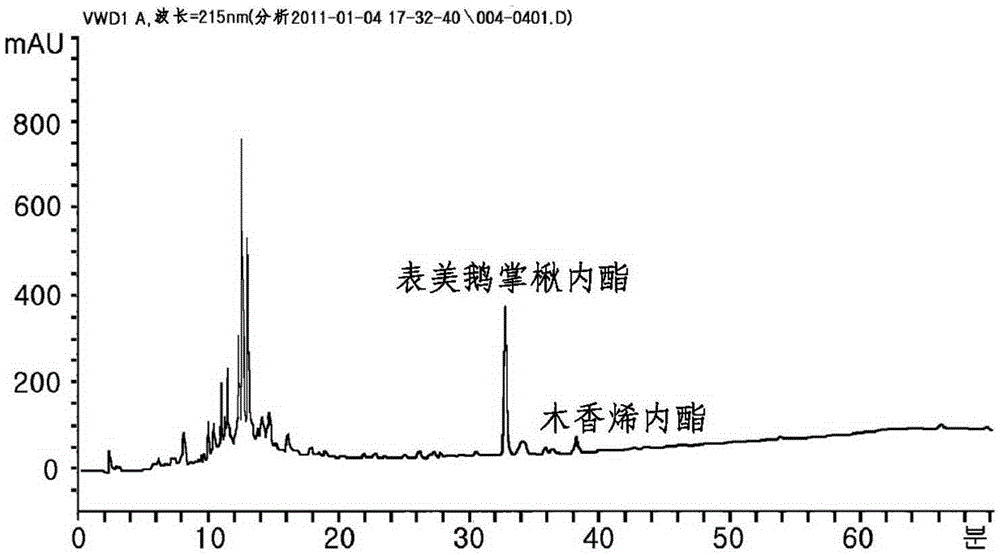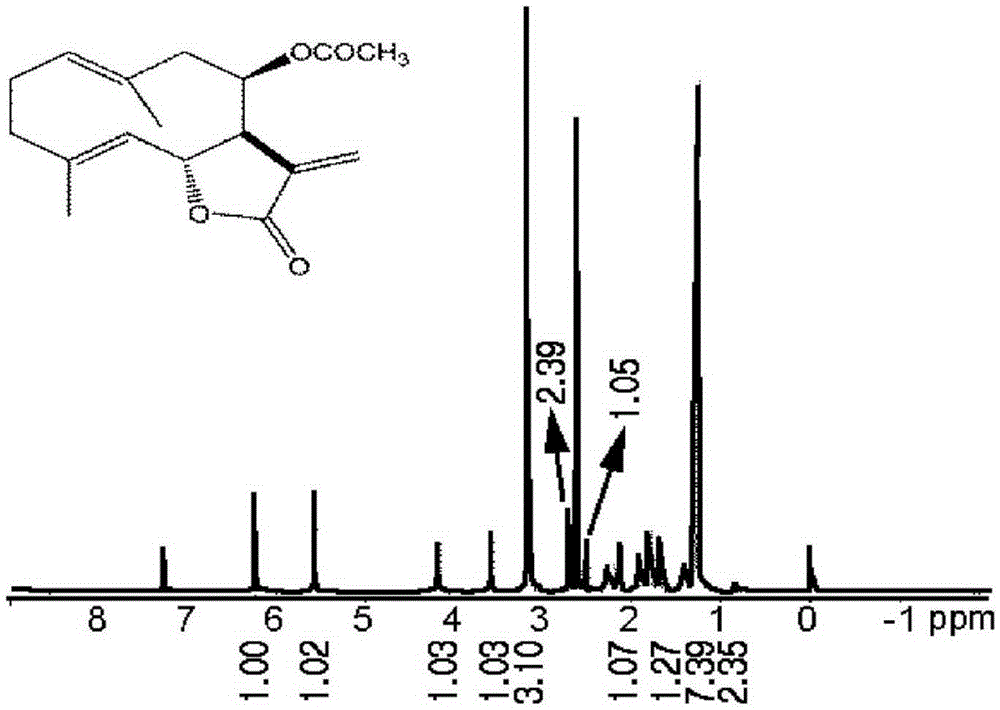Method for separating therapeutic agent for chronic myelogenous leukemia from bark of liriodendron tulipifera l.
A technology of myeloid leukemia, epituliprolactone, applied in the field of therapeutic agent for treating chronic myelogenous leukemia
- Summary
- Abstract
- Description
- Claims
- Application Information
AI Technical Summary
Problems solved by technology
Method used
Image
Examples
preparation example Construction
[0039] After the step of obtaining the lower alcohol aqueous mixture, the preparation method of the present application may need further 3 steps, which step includes: adding water to the lower alcohol aqueous mixture to obtain a low-concentration lower alcohol aqueous layer; adding dichloromethane to the alcoholic aqueous layer to separate the dichloromethane layer; and separating, concentrating and drying the material dissolved in the dichloromethane layer.
[0040] Liriodendron bark is collected from Liriodendron tulipifera located in Gangjin-gun, Jeollanam-do, Korea. After the collected bark of Liriodendron tulipifera was chopped and powdered, an extraction solvent was added in an amount 10-20 times that of the collected bark. Extraction was performed at room temperature to 50°C for 24-96 hours. Finally, the extract was obtained after concentration and drying under reduced pressure.
[0041] The present invention provides a method for extracting and purifying epilipolidol...
preparation example 1
[0054] (Preparation Example 1) Preparation of an extract from the bark of Liriodendron tulipifera using ethyl acetate solvent
[0055] 1. Solvent extraction step
[0056] 200 g of dried and chopped Liriodendron tulipifera (3-5 years old) bark was stirred and extracted with 2000 ml of ethyl acetate for 24 hours at room temperature. A preliminary extract was obtained after the extracted mixture was concentrated and filtered under reduced pressure. The resulting primary extract was further mixed and extracted with 500 ml butanol for 2-4 hours at room temperature. Then, the butanol soluble material was removed by separating and removing the butanol layer. After concentrating the remaining mixture, 12.54 g of crude extract was finally obtained.
[0057] 2. Purification steps
[0058] After 12.54 g of the obtained crude extract was dissolved in 200 ml of 70% ethanol, 200 ml of n-hexane was added to the crude extract mixture and stirred. After separating and removing the n-hexan...
preparation example 2
[0059] (Preparation example 2) Preparation of extract from the bark of Liriodendron tulipifera using ethyl acetate solvent
[0060] 1. Solvent extraction step
[0061] 200 g of dried and chopped Liriodendron tulipifera (3-5 years old) bark was stirred and extracted with 2000 ml of ethyl acetate for 72 hours at room temperature. A preliminary extract was obtained after the extracted mixture was concentrated and filtered under reduced pressure. The resulting primary extract was further mixed and extracted with 500 ml butanol for 2-4 hours at room temperature. Then, the butanol soluble material was removed by separating and removing the butanol layer. After concentrating the remaining mixture, 13.72 g of crude extract was finally obtained.
[0062] 2. Purification steps
[0063] After 13.72 g of the obtained crude extract was dissolved in 200 ml of 70% ethanol, 200 ml of n-hexane was added to the crude extract mixture and stirred. After separating and removing the n-hexane l...
PUM
 Login to View More
Login to View More Abstract
Description
Claims
Application Information
 Login to View More
Login to View More - R&D
- Intellectual Property
- Life Sciences
- Materials
- Tech Scout
- Unparalleled Data Quality
- Higher Quality Content
- 60% Fewer Hallucinations
Browse by: Latest US Patents, China's latest patents, Technical Efficacy Thesaurus, Application Domain, Technology Topic, Popular Technical Reports.
© 2025 PatSnap. All rights reserved.Legal|Privacy policy|Modern Slavery Act Transparency Statement|Sitemap|About US| Contact US: help@patsnap.com



